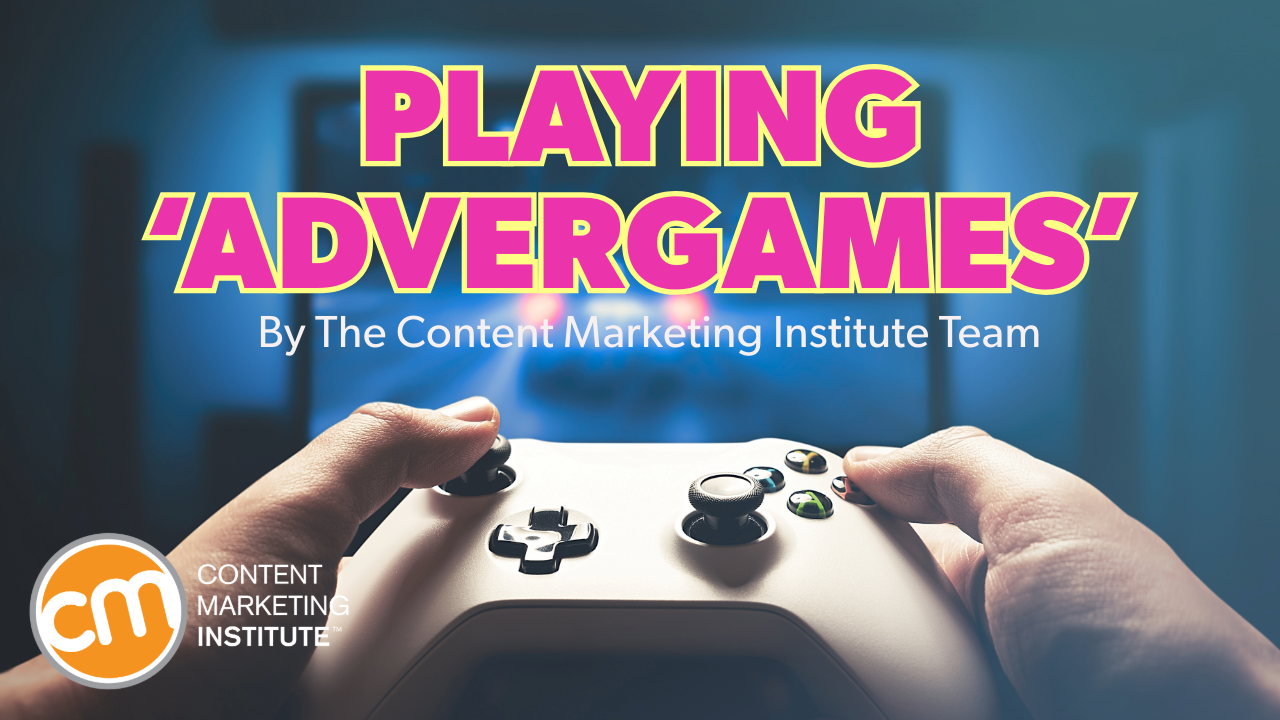
Are you ready for “advergaming”? Or is it ad gamification? Gamified advertising?
Whatever the word or phrase, interactive advertising is here. Big brands like Disney, Amazon, and even tech company Discord are featuring interactivity in their advertising formats.
If you think that sounds like something B2B companies have been doing for a while, you’re right. Interactive polls, surveys, and even games have long been a staple in the B2B marketing quiver.
But interactive insertions on streaming media and other content platforms take this to a new level. So, we went to CMI’s chief strategy advisor, Robert Rose, to ask what’s up. Watch this video or read on for his take:
Bringing gamification ads to Hulu and more
Several recent articles tackle the new trend of gamification in advertising as a different kind of marketing and advertising strategy.
In July, Marketing Dive explored Burger King going all in on gamification and speaks to more of a content marketing approach. The fast-food burger chain launched a video game called Balloon Burst to celebrate its 70th birthday. It replaced two other video games that Burger King created as a means of building the “stickiness of our brand,” as one representative said.
Not sure I’d connect the word “stickiness” to a burger brand, but then I’m not on the comms team at Burger King, but I digress.
More recently, this kind of gamification entered the paid media side of marketing.
Disney, Hulu, and others are rolling out opportunities for brands to use “advergames” on streaming media and other television-like platforms. As Marketing Brew details, Disney rolled out Quiz Show and Beat the Clock on Hulu and ESPN. Advertisers can engage viewers by hosting a quick trivia game or asking them to answer rapid-fire questions using their TV remote. Topgolf was the first to take advantage of the new ad format.
Amazon rolled out advertising on Prime Video in May. Now it’s added a new ad format — interactive quizzes. Brands can ask questions or conduct a poll or survey. Viewers can request more information via email and win prizes, such as Amazon shopping credits.
You could see this ad gamification coming. Demand for video games, especially mobile games, has been incredibly hot. Sensor Tower’s Digital Marketing Index finds that digital ad spend on mobile apps reached $25 billion in the first quarter of 2024, the second-highest figure since the record was set in the fourth quarter of 2023.
So, advergames are here and unlikely to disappear.
Playing ‘advergames’ into your B2B marketing
B2B marketers should embrace them. You’ve long seen the advantage of building configurators, polls, surveys, and other elements of interactive applications into your marketing cycle. In fact, some of the greatest B2B marketing examples are gamified. The HubSpot Website Grader has become almost legendary as an interactive way to develop new leads. Its success is so great that HubSpot made it available as a tool that partners could white label on their websites.
But not every example is a winning one.
The other day, I saw an interactive poll on a technology company’s site. “Take a poll to see if you should buy now,” the promotion said. The first question was, “Are you read to buy now?” Then it said, “If not, what would make you ready to buy now?”
Stop doing those.
Don’t make a playbook all about business configurators or polls that overtly try to discern the buyer’s customer journey status.
Instead, think about clever ways to determine intent and add value and entertain at the same time. Look at ways to incorporate this strategy not just on your websites and social media channels but in your paid media strategy.
How could you include polls and surveys to help customers along their journey and earn your brand valuable first-party data to figure out their intent?
I’ve seen this done by a brand that gated its research. Instead of asking for first and last name, title, and email address, it simply asked, “What questions are you looking to answer?” and “Would you like to see how that compares to other colleagues?”
The ongoing poll gives potential customers value by letting them know if they’re asking the same questions as their colleagues and sharing questions they might not have thought to ask. It also provides the company with insight into how and what content to deliver.
I’ve seen incredible ideas, from trivia games to assessments and interactive resource guides. Now, you can use them for more than people who visit your website, you can incorporate them into your paid media strategy. That’s a game worth playing.
HANDPICKED RELATED CONTENT:
Cover image by Joseph Kalinowski/Content Marketing Institute
